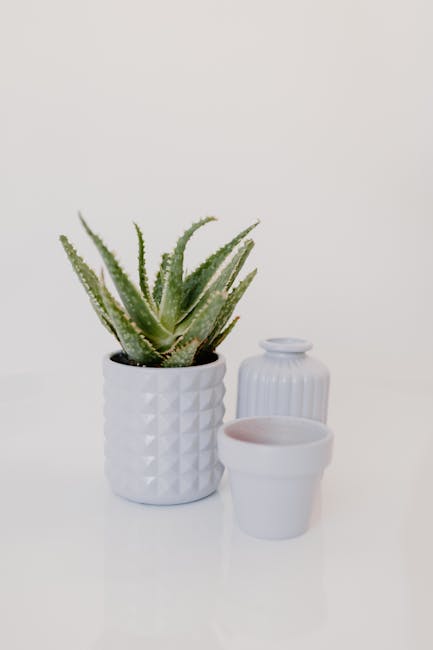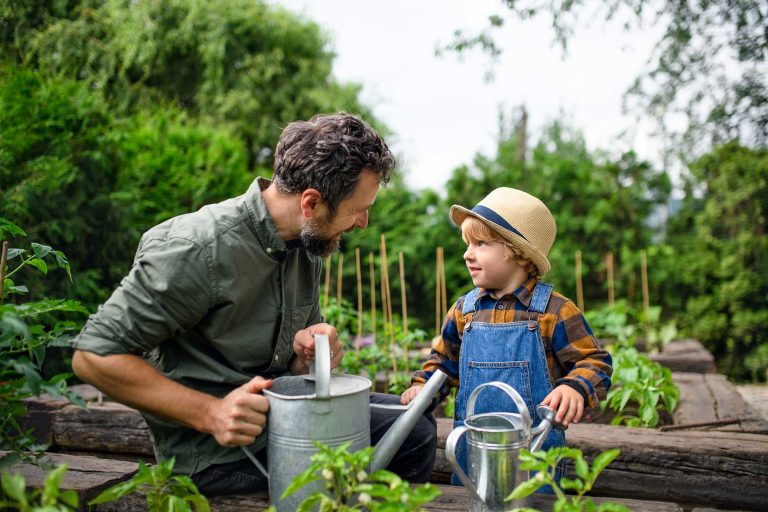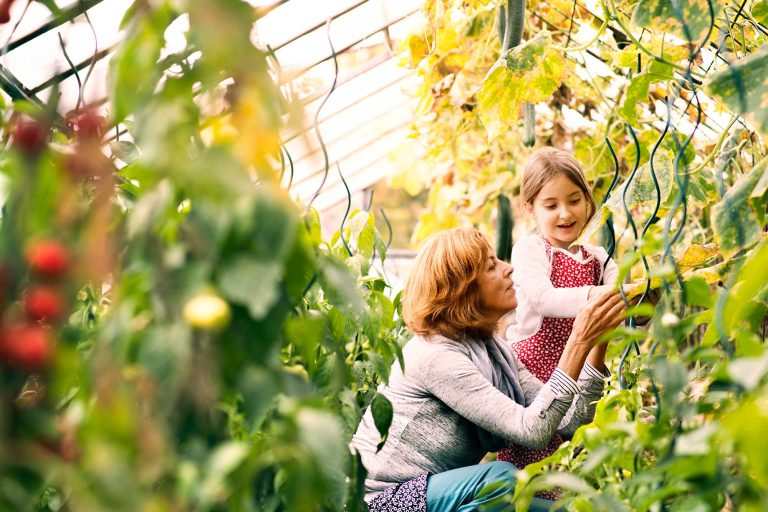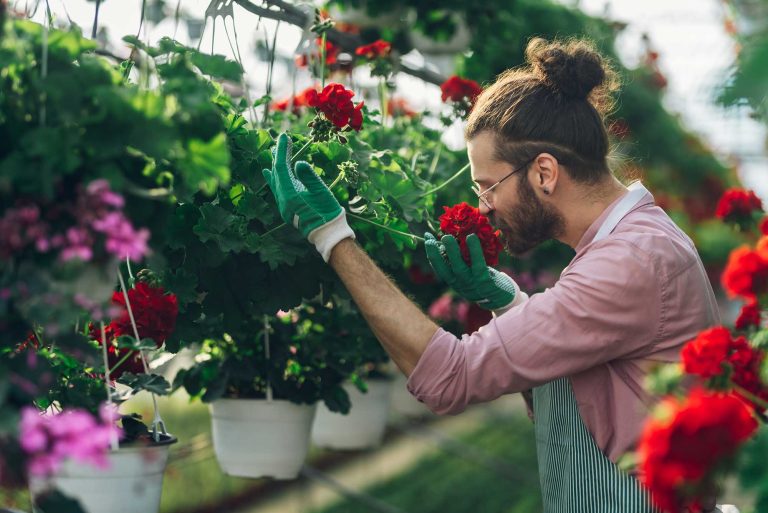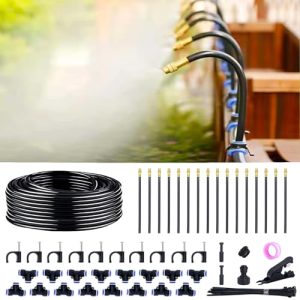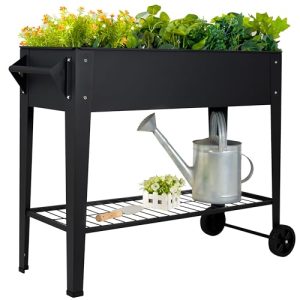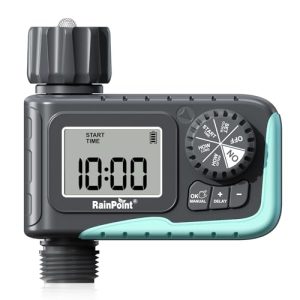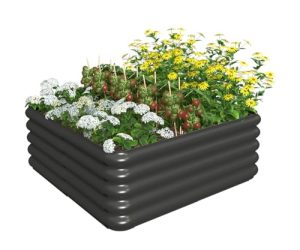Imagine stepping into your backyard and being greeted by the tranquil beauty of a natural Northwest garden. It’s a scene filled with native plants, gentle breezes, and the soothing sounds of nature.
You can have all this without spending endless hours on upkeep. Curious how? Designing a low maintenance garden that thrives in the Northwest climate is easier than you might think. By making smart choices and using native plants, you can create a stunning outdoor space that practically takes care of itself.
This article will reveal the secrets to crafting a garden that’s not only beautiful but also sustainable and easy to manage. Are you ready to transform your outdoor space into a serene sanctuary? Let’s get started on creating a garden that works with nature, not against it.
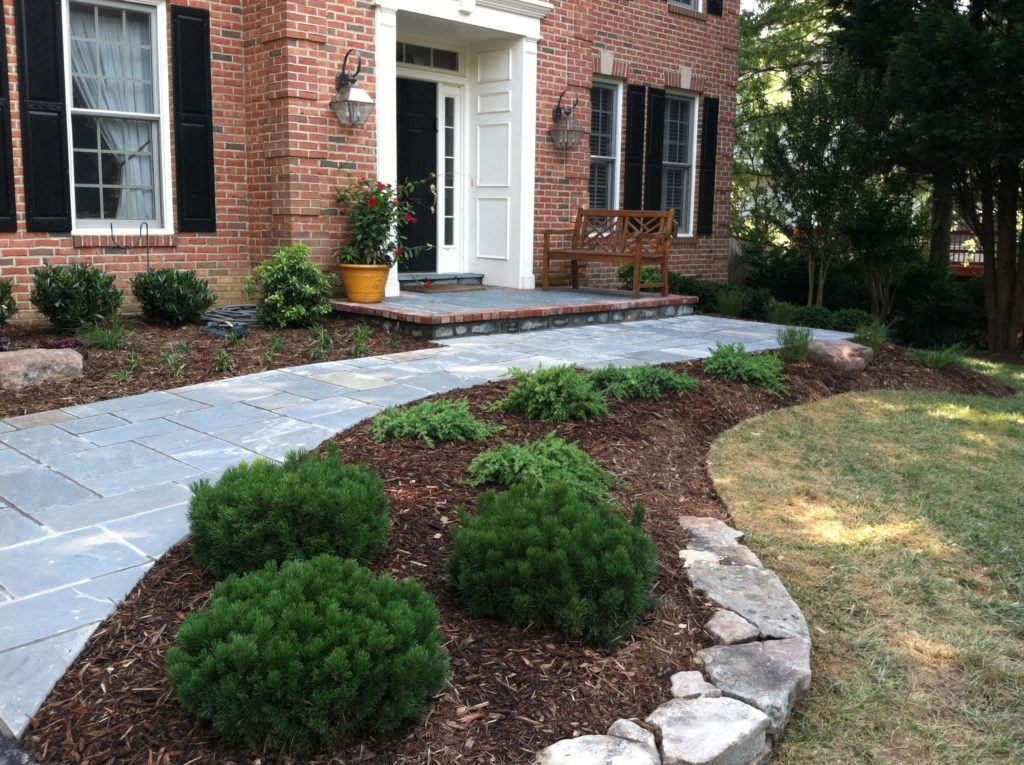
Credit: www.allentucklandscaping.com
Site Assessment
Site assessment is crucial for designing a low maintenance natural Northwest garden. Analyze soil, sunlight, and water conditions to choose suitable native plants. This ensures a sustainable garden that thrives with minimal care.
Designing a low maintenance natural Northwest garden begins with understanding your space, and this is where site assessment plays a crucial role. Think of it as getting to know your garden’s personality. By assessing the site, you can tailor your garden design to thrive naturally with minimal intervention. This is not just practical but also rewarding, as it connects you deeply with your environment. So, how do you go about it?Soil Testing
Start with the soil. It’s the foundation of your garden. Testing your soil can reveal its pH levels, texture, and nutrient content. You can use a simple DIY kit or send samples to a local extension service for detailed analysis. Once you know what your soil needs, you can choose plants that are naturally suited to thrive in those conditions.Climate Considerations
The Pacific Northwest is known for its wet winters and dry summers. Understanding these climate patterns is essential for selecting plants that are adapted to the local weather. Consider how rainfall and temperature vary throughout the year. This knowledge helps you choose plants that require less watering and are resilient to local weather changes.Sun And Shade Patterns
Observe how sunlight moves across your garden. Knowing sun and shade patterns can determine where to place sun-loving plants and shade-tolerant species. Spend a day watching how shadows shift, and note areas that receive full sun versus those that are shaded. This simple observation can significantly impact your garden’s success, ensuring each plant gets the light it needs. By engaging with these aspects of site assessment, you’ll be on your way to creating a garden that flourishes naturally. What aspects of your garden surprise you? Let this exploration guide your design choices.
Credit: dennis7dees.com
Choosing Native Plants
Designing a Northwest garden with native plants ensures low maintenance and natural beauty. These plants thrive in local conditions, requiring less water and care. Create a sustainable landscape that attracts local wildlife while minimizing upkeep.
Designing a low maintenance garden can be rewarding. Choosing native plants is a key step in creating a sustainable Northwest garden. Native species thrive with minimal care, reducing the need for watering and fertilizing. They are adapted to local soil and climate, making them a perfect choice for gardeners seeking easy upkeep.Benefits Of Native Species
Native plants support local wildlife. Birds, bees, and butterflies are attracted to their flowers. They provide essential food sources and habitats. Native species require less water and resist pests naturally. This leads to fewer chemicals in your garden. You save time and effort maintaining your landscape. Plus, native plants enhance the regional beauty of your garden.Popular Northwest Varieties
Several native species are ideal for Northwest gardens. Consider the Red-Osier Dogwood. Its vibrant red stems and white blooms add color. The Western Sword Fern is hardy and elegant. It thrives in shade and moisture-rich areas. Oregon Grape is another great choice. It offers yellow flowers and purple berries. Each species adds unique beauty and resilience to your garden.Companion Planting Strategies
Pairing plants strategically enhances growth and health. Combine tall and short plants for balanced sunlight. Use ground covers to prevent weeds and retain soil moisture. Select plants that bloom at different times. This ensures year-round interest and pollinator support. Group plants with similar water needs together. This simplifies watering routines and conserves resources.Water-wise Practices
Designing a low maintenance natural Northwest garden involves using native plants that thrive in the local climate. Incorporate drought-resistant species and efficient irrigation systems to minimize water use. Plan for layered plantings to enhance biodiversity and create a sustainable environment.
In the lush landscapes of the Northwest, designing a garden that thrives with minimal effort is achievable. Water-wise practices are key to maintaining a vibrant garden without constant watering. These practices ensure your garden remains sustainable and eco-friendly while conserving precious resources.Efficient Irrigation Systems
Efficient irrigation systems save water and time. Drip irrigation delivers water directly to plant roots. This reduces waste and ensures plants get the moisture they need. Install timers to automate watering schedules. This helps maintain consistent moisture levels. Choose systems with sensors that monitor soil moisture. These adjust watering based on weather conditions.Rainwater Harvesting
Rainwater harvesting utilizes natural rainfall to water your garden. Install rain barrels to collect runoff from rooftops. This water can be stored and used during dry spells. Consider setting up a simple filtration system. This ensures water remains clean for your plants. Harvested rainwater is a sustainable solution. It reduces reliance on municipal water supplies.Drought-resistant Planting
Select plants that thrive in dry conditions. Native plants are well-suited for Northwest climates. They require less water and maintenance. Consider succulents and ornamental grasses. These add texture and color without demanding frequent watering. Group plants with similar water needs together. This simplifies irrigation and conserves water efficiently.
Credit: bluestem.ca
Mulching Techniques
Mulching helps keep a natural Northwest garden low maintenance. It retains moisture and reduces weed growth. Organic mulches like bark or wood chips enrich the soil.
Creating a low maintenance natural Northwest garden can be a rewarding endeavor. One key aspect to achieving this is mastering mulching techniques. Mulching not only enhances the aesthetic appeal of your garden but also plays a crucial role in maintaining its health. With the right mulching strategies, you can significantly reduce the workload while ensuring your garden thrives. Let’s dive into the different types of mulch, learn effective application tips, and explore how mulching can suppress weeds.Types Of Mulch
Selecting the right mulch for your garden is essential. Organic mulches like bark chips, straw, and shredded leaves add nutrients to the soil as they decompose. These are ideal for flower beds and vegetable gardens. Inorganic mulches such as gravel or stones are perfect for pathways and areas where you want long-lasting coverage without the need for frequent replacement. If you’re aiming for a natural look, consider using wood chips or pine needles. Their earthy texture blends seamlessly with the Northwest landscape.Application Tips
Applying mulch correctly is crucial for its effectiveness. Begin by clearing the area of weeds and debris. Spread the mulch evenly, ensuring a thickness of about 2 to 4 inches for organic mulch and slightly less for inorganic options. Be careful not to pile mulch against plant stems or tree trunks, as this can cause rot. Refresh organic mulch annually to maintain its benefits and appearance. You might find that experimenting with different mulches in various areas of your garden yields the best results.Weed Suppression Benefits
Mulching can be your secret weapon against pesky weeds. By covering the soil, mulch blocks sunlight, preventing weed seeds from germinating. This means less time spent pulling weeds and more time enjoying your garden. Additionally, mulch retains moisture, reducing the need for frequent watering and protecting your plants during dry spells. Have you ever noticed how a mulched garden seems more resilient in the summer heat? This is because mulch acts as an insulating layer, keeping root systems cool and hydrated. Are you ready to transform your garden with the power of mulch? By choosing the right type and applying it effectively, you’ll be well on your way to enjoying a lush, low-maintenance Northwest garden.Natural Pest Management
Designing a natural Northwest garden that requires low maintenance is rewarding. It is vital to manage pests without harmful chemicals. Natural pest management ensures a healthy garden environment. This approach uses nature’s methods to control pests.
Encouraging Beneficial Insects
Beneficial insects are your allies in pest control. They naturally keep harmful pests in check. Ladybugs, lacewings, and spiders play key roles. Create habitats for these helpers in your garden. Planting flowers like marigolds and dill attracts them. Provide shelter with rocks, logs, and mulch. These elements invite beneficial insects to stay.
Non-toxic Pest Control
Non-toxic methods protect your garden and the environment. Use insecticidal soap or neem oil sparingly. They target pests without harming helpful insects. Diatomaceous earth is another option. It deters pests like slugs and beetles. Apply it carefully around plants. Hand-picking is effective for larger pests. This method is safe and immediate.
Integrated Pest Management
Integrated Pest Management (IPM) combines different strategies. It focuses on long-term pest prevention. Monitor your garden regularly to identify pest issues. Use traps or barriers as a first line of defense. Rotate crops to disrupt pest life cycles. Select pest-resistant plant varieties when possible. IPM reduces reliance on chemical treatments.
Seasonal Care
Creating a low maintenance natural Northwest garden involves understanding seasonal care. Each season brings unique tasks to ensure your garden thrives. By focusing on minimal intervention, you can maintain a lush and vibrant garden year-round. Let’s explore how to keep your garden looking its best through every season.
Minimal Pruning Techniques
Pruning keeps plants healthy and neat. Choose plants that require less pruning. Evergreen shrubs like rhododendrons and azaleas need minimal trimming. Prune them in early spring after flowering. Use sharp tools for clean cuts. Remove dead or damaged branches first. Thin out crowded areas to improve airflow.
Winter Preparation
Winter can be harsh in the Northwest. Protect your plants from cold and frost. Mulch around the base of plants to retain moisture. This also insulates roots from freezing. Cover delicate plants with burlap or frost blankets. Trim back perennials to ground level. They will regrow in spring.
Spring Renewal Strategies
Spring is a time of renewal. Focus on cleaning and rejuvenating your garden. Remove any winter debris like fallen leaves and branches. Refresh mulch layers to conserve water and suppress weeds. Divide crowded perennials to encourage healthy growth. Fertilize with organic compost to boost soil nutrients.
Creating Wildlife Habitats
Designing a low maintenance natural Northwest garden involves selecting native plants that thrive in local conditions. Incorporate diverse plant species to attract wildlife and create a self-sustaining ecosystem. Ensure proper spacing for growth and minimal upkeep, while providing shelter and food sources for birds and insects.
Creating a wildlife-friendly garden transforms your space into a vibrant ecosystem. It invites birds, bees, and other creatures to thrive. A Northwest garden can support diverse wildlife with minimal maintenance. Here’s how to design a garden that supports nature.Bird-friendly Features
Birds add life and color to your garden. Install bird feeders and baths to attract them. Choose native plants that provide seeds and berries. Evergreen trees offer shelter and nesting spots. Avoid pesticides to keep birds safe.Pollinator Support
Pollinators like bees and butterflies are essential for gardens. Plant native flowers that bloom in different seasons. Group flowers in clusters for easy access. Create shallow water sources for pollinators to drink. Maintain a variety of plants to support different species.Habitat Diversity
Different habitats support various wildlife. Include logs and rocks for insects and small animals. Leave some leaf litter for ground-dwelling creatures. Add a small pond or water feature. Water attracts frogs, insects, and birds. Use a mix of plant heights to create layers. Layers provide shelter and food for different animals.Aesthetic Considerations
Designing a low maintenance natural Northwest garden involves selecting native plants. Choose varieties that thrive in local conditions. Incorporate elements like rocks and mulch to reduce watering needs while enhancing visual appeal.
Designing a low maintenance natural Northwest garden involves more than just picking the right plants. It’s about creating a visually pleasing space that resonates with the natural beauty of the Pacific Northwest. Aesthetic considerations play a crucial role in achieving this harmony, ensuring that your garden is not only functional but also a feast for the eyes.Color And Texture Balance
Balancing color and texture can transform your garden into a vibrant outdoor oasis. Consider using native plants like the Pacific Rhododendron, which offers bursts of color with minimal care. Pair these with evergreen ferns to add lush texture and year-round greenery. Think about the rhythm of your garden’s colors. Mix different shades of greens, purples, and reds to create a dynamic landscape. Would a pop of bright orange from a Tiger Lily make your garden sing?Structural Elements
Incorporate structural elements that define spaces and add depth. Simple pathways made from natural stone or gravel can guide visitors through your garden while blending seamlessly with the environment. Add height and interest with trellises or arbors draped in native vines like the Honeysuckle. These not only serve as stunning focal points but also provide habitats for local wildlife. Remember to keep structures in scale with your garden. A small garden benefits from subtle features, while a larger space can handle more dramatic elements.Year-round Interest
Ensure your garden captivates through every season by choosing plants that offer year-round interest. Consider Evergreen Huckleberry for its glossy leaves and winter berries. Incorporate deciduous trees like Vine Maple, which provide stunning fall foliage and delicate spring blossoms. Bulbs such as Daffodils and Tulips can bring early spring color to life. Ask yourself: How can you create a garden that tells a different story each season? By planning thoughtfully, your garden can become a constantly evolving masterpiece that requires minimal upkeep.Frequently Asked Questions
What Plants Thrive In A Northwest Garden?
Native plants like Sword Ferns, Salal, and Oregon Grape thrive well. They require minimal maintenance and are drought-resistant. Incorporating these plants ensures your garden flourishes naturally. They are adapted to the local climate, reducing the need for extra watering or care.
How To Minimize Garden Maintenance?
Choose native plants and use mulch to retain moisture. Implement drip irrigation systems for efficient watering. This approach reduces weed growth and conserves water. Regularly check for pests and diseases to maintain plant health. These steps ensure your garden remains low-maintenance and healthy.
Can I Have A Year-round Northwest Garden?
Yes, select plants that bloom in different seasons. Evergreen shrubs and perennials provide year-round interest. Incorporate elements like rocks and wood for structure. These additions ensure your garden remains visually appealing throughout the year. Planning and plant selection are key for a vibrant year-round garden.
What Soil Is Best For A Northwest Garden?
Well-draining soil with organic matter is ideal. Amend with compost to improve fertility and structure. This supports plant health and reduces the need for fertilizers. Testing your soil can help determine specific needs. Proper soil preparation ensures a thriving low-maintenance garden.
Conclusion
Creating a Northwest garden can be simple. Focus on low-maintenance plants. Choose native species that thrive naturally. They require less care and water. Mulch helps retain soil moisture. It reduces weeds too. Group plants with similar needs. This saves time on maintenance.
Incorporate paths for easy access. Stones or wood chips work well. Consider seasonal changes for plant selection. Think about colors and textures. Keep it natural and easy. Enjoy the beauty of your garden without much effort. Relax and watch nature unfold.
Your garden will thrive with minimal upkeep.
